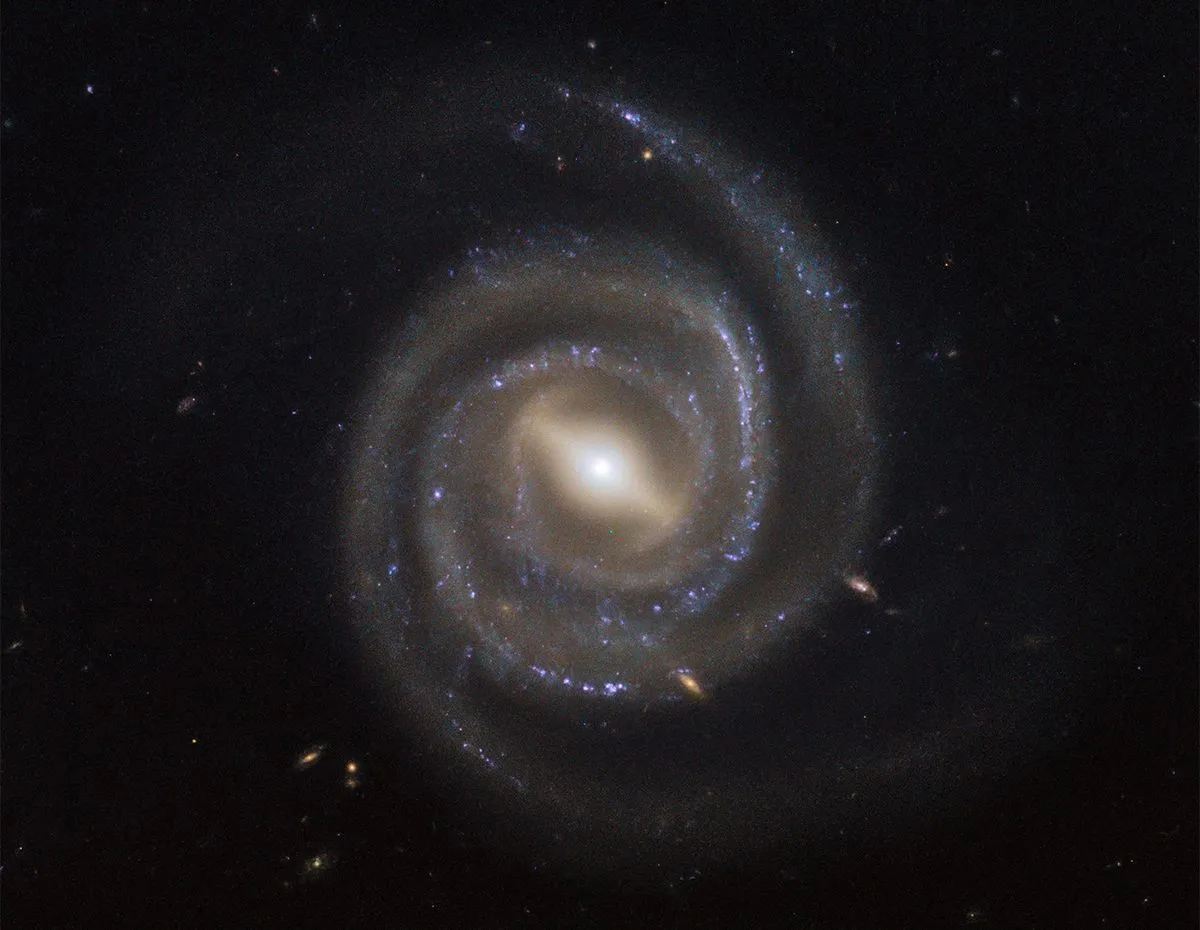Astronomers have found a black hole in the early Universe that has a jet pointed at Earth, and which could help solve how the cosmic 'dark ages' came to an end.
A team led by Yale University found the 'quasar', which is brightening and dimming intensely.
Read more

Known as J1429+5447, it's the most distant object detected by the NuSTAR X-ray space telescope, and one of the most highly variable quasars ever seen.
It could help explain how some objects in the early Universe grew at a highly accelerated rate.

Quasars explained
Many think of black holes as dark, cosmic vacuum cleaners where not even light can escape the gravitational pull.
But black holes can be some of the brightest objects in the Universe.
So-called quasars are formed from active galactic nuclei (AGN), which are the bright centres of galaxies where matter falling into a black hole generates energy that glows brightly in radio, infrared, visible, ultraviolet, x-ray and gamma-ray wavelengths.

Quasars are among the oldest, brightest objects in the Universe and can be used to learn more about the structure of the Universe and how it evolved after the Big Bang.
And because they are so far away, light from these objects takes billions of years to reach Earth's telescopes, meaning astronomers are effectively looking back in time, seeing them as they existed when the Universe was in its infancy.
"In this work, we have discovered that this quasar is very likely to be a supermassive black hole with a jet pointed towards Earth — and we are seeing it in the first billion years of the Universe," says Lea Marcotulli, a postdoctoral fellow in astrophysics at Yale and lead author of the study published 14 January 2025 in the Astrophysical Journal Letters.

Detecting quasar J1429+5447
The team looked at observations of J1429+5447 by the NuSTAR (Nuclear Spectroscopic Telescope Array) space telescope.
Then they compared that data with unrelated observations four months earlier by the Chandra X-ray telescope.
It showed J1429+5447's x-ray emissions had doubled in that time.
"This level of X-ray variability, in terms of intensity and rapidity, is extreme,” says Meg Urry, the Israel Munson Professor of Physics and Astronomy in Yale’s Faculty of Arts and Sciences and co-author of the study.
"It is almost certainly explained by a jet pointing toward us — a cone in which particles are transported up to a million lightyears away from the central, supermassive black hole.
"Because the jet moves at nearly the speed of light, effects of Einstein’s theory of special relativity speed up and amplify the variability."

What J1429+5447 tells the team
Astronomers say they use quasars to study an epoch in the early Universe known as reionisation, which is considered the point at which the 'lights' in the Universe were 'turned on'.
Just one billion years after the Big Bang, neutral hydrogen atoms became charged and the first generation of stars lit up the cosmos.
"The epoch of reionisation is considered the end of the Universe’s dark ages," says Thomas Connor, an astronomer at the Chandra X-Ray Center and co-corresponding author of the study.
"The precise timeline and source class responsible for reionisation are still debated, and actively accreting supermassive black holes are one proposed culprit."
The team say the study provides crucial clues in the effort to learn more about reionisation, and could help astronomers find other supermassive black hole candidates in the early universe.
"Finding more supermassive black holes that are potentially hosting jets raises the question as to how these black holes grew so big in such a short timescale, and what the connection may be to jet triggering mechanisms," says Marcotulli.
Read the full paper on J1429+5447 at iopscience.iop.org/article/10.3847/2041-8213/ad94ee

